How to Consult a Client Before a Hair Treatment
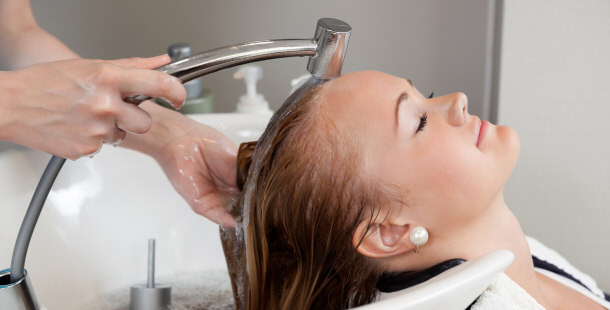
Finding out what a client wants is the first and most important thing in a
consultation. You cannot perform a successful hair treatment on a client without
knowing what they want. A professional consultation should include, observation
skills, clarification techniques, advise, product knowledge, questioning
techniques, effective communication, including listening skills and technical
knowledge about hairdressing services.
Questioning techniques
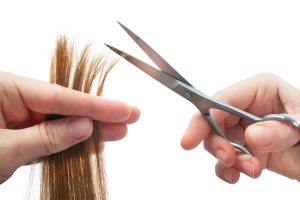 Asking
questions is very important in a consultation, asking lots of questions helps
you to get a clear understanding of what your client wants. It is also very
important to make sure the client asks questions if they have any as you want to
make sure that they feel as comfortable as possible throughout the treatment.
All of the information you receive from the client through asking the question
should be recorded on their record card. Every client must have a record card
whether they are new or a returning customer. Asking
questions is very important in a consultation, asking lots of questions helps
you to get a clear understanding of what your client wants. It is also very
important to make sure the client asks questions if they have any as you want to
make sure that they feel as comfortable as possible throughout the treatment.
All of the information you receive from the client through asking the question
should be recorded on their record card. Every client must have a record card
whether they are new or a returning customer.
There are two types of questions, opened and closed.
Closed questions usually only need one word answers, for example ‘have you
used a permanent color on your hair?’ the answers to this question should just
be yes or no.
Open questions require a fuller response then the closed questions. For
example ‘how are you today’ this question is usually answered with more than
just a yes or no.
Clarification techniques
Clarification means checking the details you have been given with the client to
make sure that you have everything written down correctly.
When the client makes a booking you should check the date, time, the service
they require, the clients name and a contact number. Once you have repeated this
to the client they should confirm that it is correct if not then they will
correct you.
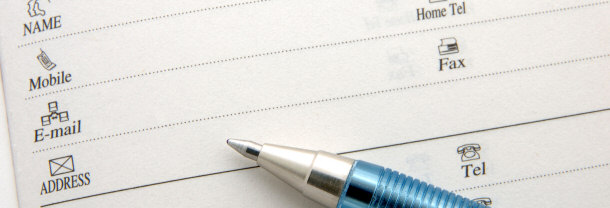
When the client arrives at the salon reception you should confirm the service
they require and the name of the stylist that will be completing that service.
Observation techniques
Assessing
your client’s body language and facial expressions give you a clear idea or how
your client is feeling with the suggestions you are making. It is also vital to observe the hairs condition, growth patterns, porosity,
elasticity and texture.
-
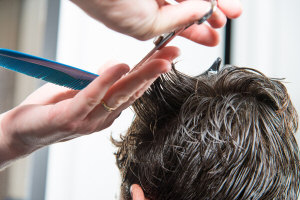 Porosity test – This is to test the condition of the outer layer
of the hair shaft (the cuticle). Porous hair will absorb water and chemical
products very quickly. If the cuticle scales are closed, flat and undamaged
the hair will feel smooth and look shiny. When the hair is chemically or
physically damaged the cuticles scales will become raised and may even be
missing. You test the porosity of the hair by taking a strand of hair and
hold it by the root between the thumb and forefinger of one hand and run the
forefinger and thumb down the strand of hair from your other hand. If the
hair feels rough and bumpy the cuticle scales are raised and open this means
the hair is porous. If the hair feels smooth the cuticle is flat and closed,
which means the hair is in good condition. Porosity test – This is to test the condition of the outer layer
of the hair shaft (the cuticle). Porous hair will absorb water and chemical
products very quickly. If the cuticle scales are closed, flat and undamaged
the hair will feel smooth and look shiny. When the hair is chemically or
physically damaged the cuticles scales will become raised and may even be
missing. You test the porosity of the hair by taking a strand of hair and
hold it by the root between the thumb and forefinger of one hand and run the
forefinger and thumb down the strand of hair from your other hand. If the
hair feels rough and bumpy the cuticle scales are raised and open this means
the hair is porous. If the hair feels smooth the cuticle is flat and closed,
which means the hair is in good condition.
- Elasticity test – This tests the strength of the hair. Hair that
has been damaged due to chemical processes may have lost most of its natural
strength. This is due to the internal chemical links and bonds in the cortex
of the hair becoming damaged and broken. You test the elasticity of the hair
by taking one strand of hair and holding it firmly between the thumb and
forefinger of each hand and gently pull.

If the hair stretches more than
half of its original length and does not return to its original length then
it is over elastic and may snap or break during chemical processing.
- Skin test – This test must always be done when a client is having
a coloring treatment. It is carried out to check if the client is allergic
to the coloring products. It should be carried out 24-48 hours before the
coloring process so any reactions have time to come up if they are going to.

A skin test is done by applying a small bit of permanent color to a chosen
area this is usually on the elbow or behind the ear.
Effective communication and listening skills
To be a good listener to your client during a consultation you need
to know when to stop talking, listen with interest and understanding, providing
encouragement and confirming you have taken in the conversation for example
nodding and agreeing with a point that may have been raised.
Client confidentiality
Client confidentiality is very important in a salon as you want your
client to feel that they are comfortable talking to you about any personal
problems or queries. Clients must be able to rely on you not telling anybody
anything they may tell you in confidence. For example; their address,
their telephone numbers, and also information about their illnesses and
disorders.
How to make successful recommendations for your client
You need to make sure that any products you are going to recommend
your client are in-stock as it can be very unprofessional to recommend something
that your salon does not have. You also need to make sure that anything you
recommend is true and really is for the benefit of the customer as you do not
want them to lose faith in you.
Record cards
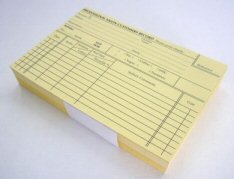 Every
client that visits your salon for a treatment must have a record card whether
they are a new or a regular client they need one. You cannot use an excuse that
you know the client so you do not need to complete one. It will not cover you if
anything bad happens during a service and the client claims you knew about any
conditions or problems she may have. The function of a record card is to: Every
client that visits your salon for a treatment must have a record card whether
they are a new or a regular client they need one. You cannot use an excuse that
you know the client so you do not need to complete one. It will not cover you if
anything bad happens during a service and the client claims you knew about any
conditions or problems she may have. The function of a record card is to:
- Record client details - phone number, address etc. so you can contact
the client if necessary
- Provide full and accurate information
- Ensure consistency of services regardless of who performs the service
- Record the date of each service
- Record any changes to the service
The client record needs to be completed in full for every service the
client has. Record cards are also very helpful for if you have completed a
treatment and the next time your client comes in your colleague completes the
treatment, it means that he or she can look up what you have previously done on
the client or any problems they may have or had.

By doing this, you also
help safeguard the salon, yourself and the other stylists to prevent clients
taking legal action for damages or negligence.
Salons usually use one of two methods to store client cards
- A
computerized system which is used to book appointments and also to record
client information about services carried out and products used.
- Record cards arranged in alphabetical order using the first letter of
the surname. If the record card system is used the salon must make sure that
they are locked away out of the reach of everyone other than the stylist and
receptionist.
A record card should include all of the following
-
 Client’s name, address and contact number Client’s name, address and contact number
- Clients occupation
- Contraindications
- Previous services and specific products used and their success or
problems
- Services carried out and the date they were carried out
- Outcomes/results and effectiveness of salon service
- Recommended aftercare
- Home care
- Recommendations for future services
- Purchases of products and additional services
All these details should be checked at every treatment with every
client.
Hair
The Ultimate Guide to Growing Long Healthy Hair
Importance of Personal Presentation and Hygiene in a Salon
How to Consult a Client Before a Hair Treatment
Natural Homemade Remedies for Frizzy Hair
|